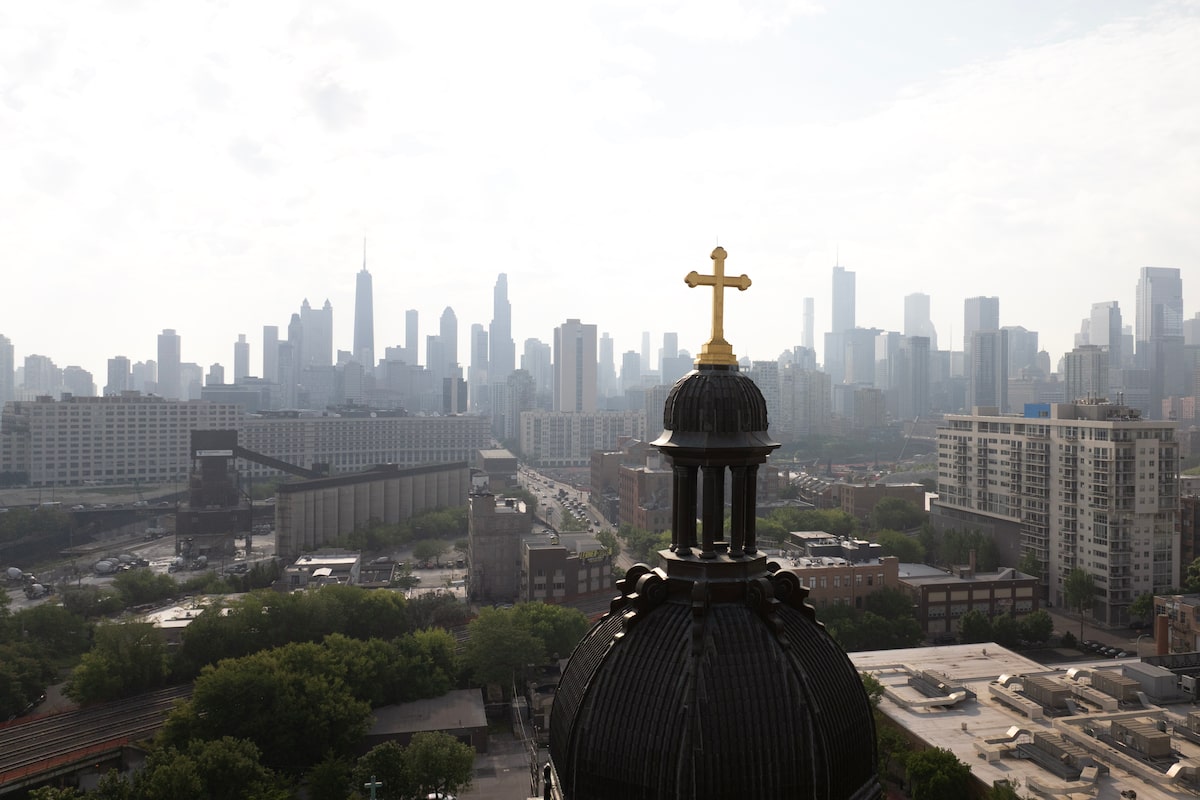Smoke from Canadian wildfires has wafted down south to American cities such as Chicago, prompting a letter from members of Congress to the Canadian ambassador to the U.S.Scott Olson/Getty Images
Glenn McGillivray is managing director of the Institute for Catastrophic Loss Reduction and adjunct professor of disaster and emergency management at York University.
According to six Republican Members of Congress who wrote a joint letter to the Canadian ambassador to the U.S., Canada is a horrible upstairs neighbour. Seems we are ruining the summer of many Americans with all the wildfire smoke that our collective negligence is causing to waft into the apartment of our downstairs neighbour.
The half dozen lawmakers who penned the letter to Ambassador Kirsten Hillman on July 7 pointed to “lack of active forest management” as a “key driver of this issue,” but also noted that arson is “another way multiple large wildfires have ignited in Canada.”
What are the health risks of wildfire smoke? How to protect your lungs from poor air quality
Their answer to the dilemma? “With all the technology that we have at our disposal, both in preventing and fighting wildfires, this worrisome trend can be reversed if proper action is taken.”
We have to do a better job of raking the forest floor, I guess.
Wildfire smoke is a serious issue. While research into the varied impacts is in its relative infancy, recent investigations have found numerous negative effects of smoke exposure on both people and animals, including birds. Exposure to wildfire smoke has also been linked to possible increased instances of dementia.
However, solving the smoke issue is a “wicked problem” of sorts. There are no easy or cheap answers to the challenge. Indeed, it is quite likely to be unsolvable.
Toronto’s skyline was hazy this week as smoke from Prairie wildfires enveloped the city.Chris Young/The Canadian Press
One problem is the sheer size of our country. Canada is the second largest country in the world, with a landmass of almost 10 million square kilometres. More than half – about 55 per cent – is covered by the boreal zone. There are also other forests, grasslands and wetlands that can (and do) burn. The long and short of it is that Canada has just too many fuel-laden areas to be able to manage effectively. And many are totally inaccessible to people and machines.
Along with managing our forests better, the letter also seems to imply that we can suppress our way out of the issue. Without saying it outright, the lawmakers appear to hint that we can put these fires out.
We can’t.
An aerial tanker drops retardant onto a growing wildfire in Squamish, B.C., on June 9. When you see tankers dropping water and fire retardant, they aren’t trying to put the fire out; they are trying to stop it from growing.Jesse Winter/Reuters
There is a long-held myth from those who know little about wildfire that scoopers, tankers and wildland firefighters exist to put forest fires out. But for the most part, crown fires in the boreal are basically insuppressible. When you see tankers dropping water and fire retardant, they aren’t trying to put the fire out. (That would be like spitting into hell.) They are largely trying to prevent it from growing, with the goal of starving it of new fuel, thus, containing it.
Like virtually all countries that experience regular wildland fires, Canadian aircraft and ground crews are reserved for protecting life and assets, there aren’t enough resources to fight every fire, especially for the limited purpose of preventing smoke from migrating south. Indeed, our wildfire fighting resources are stretched too thin as it is. But even if we tripled these resources, it still wouldn’t be enough.
We need to remind ourselves that along with a rapidly warming climate, part of the reason we are seeing these large, intense crown fires threatening communities with physical damage and generating large amounts of smoke is because we did our best to keep fire off the landscape for more than 100 years. This misguided policy prevented fire from doing one of its main jobs, managing forest undergrowth and organic litter (i.e. “fuel”) in a natural way.
Some have suggested that forest products companies can manage our forests or that Indigenous peoples should be allowed to reintroduce cultural burning on the landscape. But, again, if the goal is to limit the production of a meaningful amount of smoke, their efforts would be a drop in the bucket.
But that doesn’t mean there is nothing we can do. Public messaging about poor air quality needs to get to marginalized populations, and that messaging must be simple and in multiple languages. Our communities need more public centres that can act as safe places during smoke events. Considerations must also be made for on-reserve Indigenous communities that are often evacuated for weeks or months on end due to smoke episodes. Both public housing and private residences must have modern cooling systems that can filter smoke and provide safe spaces for residents, which may require building code and local bylaw changes. And labour laws must be bolstered to protect those who must work outdoors.
While we recognize that there is such a thing as “good fire,” there is no such thing as “good smoke.” Unfortunately, this smoke is something that we’ll need to learn to live with.

